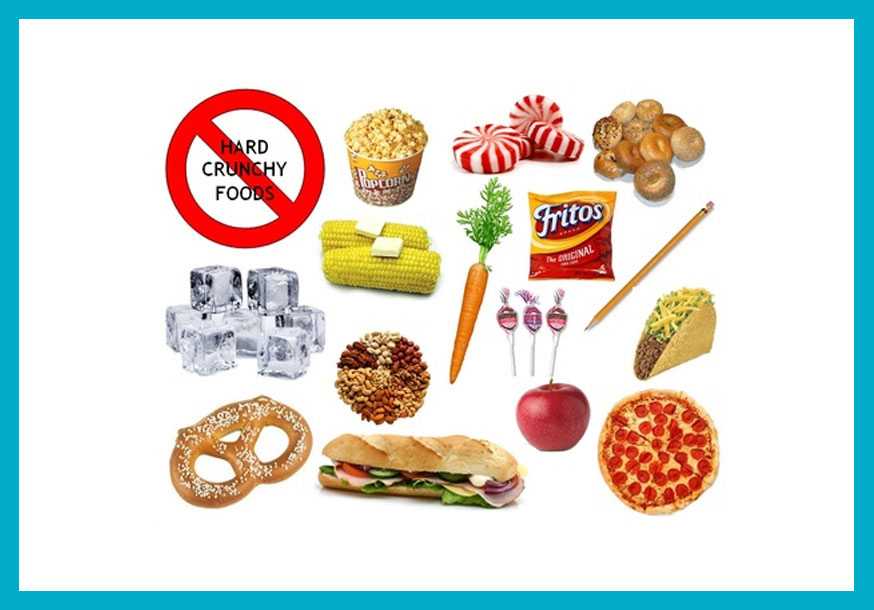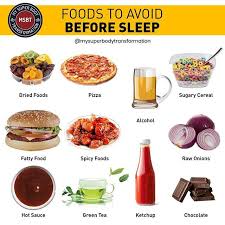
Colitis can make it difficult to digest different types of food. It is important to know what foods you can eat when you have colitis. Those who are suffering from ulcerative colitis may want to limit their intake of potatoes as they are high in glycoalkaloids. These substances can cause gas or bloating and may worsen symptoms. Consuming fried potato chips and skins can worsen the symptoms. Consuming foods high in sulfur can also be harmful to the body. This can cause excessive gas, cramping, diarrhea, and other health problems. Experts recommend that you limit the intake of sulfites from your diet and avoid processed foods.
If you are trying avoid spicy foods, it's important to stay away. These contain capsaicin, which can be very irritating to the intestine lining and cause a flare-up. This can also lead to colon damage and can make it difficult to maintain remission. If you can tolerate ground flaxseeds you may be able to eat a low-FODMAP food plan. These diets can be difficult for some people. Talk to your doctor before beginning a low FODMAP regimen. Make sure you are comfortable with the choice.
You should eat a low-fiber diet if you have colitis. Remission is possible by eating foods high in fiber. Bananas are a good choice for those with lupus. Talk to a doctor about a simple elimination diet. The goal is to identify the foods that trigger your colitis symptoms.

While it's not advised to avoid food that contains soluble or insoluble fibrous fiber, a healthy IBD diet will contain standard recommendations. Because of the individuality of your condition, you will need to customize the foods that you eat when colitis flares up. If you eat too much pasta and bread, you may develop diarrhea. It may be easier to eliminate these foods or to eat more easily during flare ups.
While limiting dairy products and wheat is helpful in easing your colitis symptoms, cutting out certain food groups completely is not a good idea. Instead, reduce the amount of food that you eat. As an addition to your regular diet, you can consider a gluten-free diet. Avoid dairy products and a gluten-free diet. If you are suffering from a colitis flare up, you should also consider limiting foods that contain high amounts of fiber.
Because people with UC may not have the ability to digest lactose properly, it is important that you limit your intake of dairy products. So, it's important to stay hydrated during a flare up. Greek yogurt is an option. This yogurt contains probiotics as well as low levels of lactose. You should avoid drinking any type of milk, as it is high in saturated fats.
It is possible to stick to a diet rich with fruits and vegetables. These are not recommended if your condition is UC. They can increase inflammation in the stomach. They can also help to reduce symptoms of UC. Reduce your intake of foods that cause colitis flareups. Avoid raw vegetables and eggs if diarrhea is a concern. Avoid eating raw vegetables or eggs if you have colitis.

You can also enjoy salmon. Salmon oil can help to reduce inflammation. It is also a good source of protein. Also, tuna and other fishes are high in omega-3 fat acids. However, fish should be cooked so that it doesn't lose its nutritional content. It is important to eat more fish and increase your intake of calories and protein. This will help you avoid colitis flare ups in the future and improve your health.
Also, you should reduce fiber intake. High amounts of magnesium or folate can be found in many fiber sources. These foods should be avoided by people suffering from ulcerative bowel disease. Foods high in fiber should be avoided as they can trigger symptoms. Avoid processed foods and products made with enriched white flour. They can lead to an epidemic of the disease. You should avoid them if you wish to receive the most effective relief.
FAQ
Is cold a sign of a weak immune response?
There are two types of people in the world: those who love winter and those that hate it. But whether you love or hate it, you may find yourself wondering why you feel so lousy when it's cold out.
The fact is that our bodies are designed for warmth and function best. In fact, we evolved to thrive in hot climates because that's where most of our food sources are located.
We live in a very different environment than our ancestors. We spend more time indoors and are often exposed to extreme temperatures (cold or heat) and eat processed foods rather than fresh.
This means that our bodies aren’t used to these extremes. This means that we feel tired, sluggish and even sick when we venture outside.
These effects can be reversed, however. Keep your body hydrated. Hydration is key to keeping your body well hydrated, flushing out toxins and keeping your system healthy.
Another important step is to ensure that you're eating healthy meals. Consuming healthy food helps maintain your body's optimal temperature. This is especially helpful for people who spend a lot of time indoors.
It is worth taking a few extra minutes each day to meditate. Meditation can relax your mind and make it easier manage stress and illness.
How to measure your body fat
A Body Fat Analyzer will give you the most accurate measurement of body fat. These devices are used to determine the percentage of bodyfat in people who desire to lose weight.
What is the difference in a virus and bacteria?
A virus can be described as a microscopic organism that cannot reproduce in another cell. A bacterium, a single-celled organism, reproduces by splitting into two. Viruses have a very small size (about 20 nanometers), while bacteria is larger (up to one micron).
Viruses can be spread by contact with bodily fluids containing infected substances, such as saliva, urine and semen. Bacteria can be spread by direct contact with infected objects and surfaces.
Viruses can enter our bodies through cuts, scrapes, bites, or other breaks in the skin. They may also get into the body through the nose and mouth, eyes, ears or rectum.
Bacteria can be introduced to our bodies by cuts, scrapes or burns. They can also enter our bodies from food, water, soil, dust, and animals.
Both viruses and bacteria can cause illness. But viruses do not have the ability to multiply within their hosts. They can only infect living cells and cause illness.
Bacteria can multiply within their hosts and cause illness. They can even invade other parts of the body. They can even invade other parts of the body, which is why antibiotics are necessary to eradicate them.
What can you do to boost your immune system?
Human bodies are made up of trillions upon trillions of cells. These cells collaborate to create organs, tissues and other functions. When one cell dies, another cell replaces it. Hormones, which are chemical signals that allow cells to communicate with one another, enable them to do so. Hormones regulate all bodily processes, from growth and development to metabolism and immunity.
Hormones refer to chemicals produced throughout the body by glands. They travel through the blood stream and act like messengers to control how our bodies function. Some hormones can be produced in the body, while others may be made outside.
The hormone-producing glands release their contents into bloodstream. This is when hormone production starts. Once released, hormones move through the body until they reach their target organ. Sometimes hormones stay active for only a short time. Others hormones remain active longer and still have an influence on the body's functioning long after they leave bloodstream.
Some hormones are made in large quantities. Others are made in small quantities.
Certain hormones can only be produced at specific times in life. For example, estrogen is made during puberty. Estrogen assists women with breast development, bone density, and osteoporosis prevention. It helps to stimulate hair growth and maintains skin's softness.
How does weight change with age?
How do you know if your bodyweight changes?
Weight loss occurs when there is less fat than muscle mass. This means that calories must be consumed at a rate greater than energy. Reduced activity is the leading cause of weight gain. Other factors include stress, illness and pregnancy. Weight gain is when there are more calories than muscle mass. It happens when people eat more calories than they use during a given day. The most common causes are overeating, increased activity, hormonal changes, and excessive calories.
The primary reason we lose weight is that we consume less calories than what we burn. By exercising regularly, our metabolism rates increase which in turn burns more calories during the day. But, this does not mean that we will be thinner. It is important to know if we are losing weight or gaining muscle. If we're burning more calories that we consume, we'll lose weight. But, if we consume far more calories than what we burn, then we actually store them as fat.
As we age, we become less agile and don't move as often. We also tend eat less than we used to. Also, we are more likely to gain weight. On the flip side, we tend to have more muscle mass so we look bigger than we really are.
If you don't weigh yourself every week, it's impossible to determine how much weight has been lost. There are many different ways to measure your weight. You can measure your waist, hips and thighs as well as your arms. Some people prefer to use bathroom scales while others like to use tape measures.
You can track your progress by weighing yourself at least once per week and measuring your waistline every month. You can also take photographs of yourself every few years to track how far your progress has been.
You can also look up your height, weight and body measurements online to determine how much you weigh. If you are 5'10" tall, and you weigh 180 lbs, then you would probably weigh 180 lbs.
What are the 10 most delicious foods?
These are 10 of the best foods to eat.
-
Avocados
-
Berries
-
Broccoli
-
Cauliflower
-
Eggs
-
Fish
-
Grains
-
Nuts
-
Oats
-
Salmon
Statistics
- The Dietary Guidelines for Americans recommend keeping added sugar intake below 10% of your daily calorie intake, while the World Health Organization recommends slashing added sugars to 5% or less of your daily calories for optimal health (59Trusted (healthline.com)
- nutrients.[17]X Research sourceWhole grains to try include: 100% whole wheat pasta and bread, brown rice, whole grain oats, farro, millet, quinoa, and barley. (wikihow.com)
- According to the 2020 Dietary Guidelines for Americans, a balanced diet high in fruits and vegetables, lean protein, low-fat dairy and whole grains is needed for optimal energy. (mayoclinichealthsystem.org)
- WHO recommends reducing saturated fats to less than 10% of total energy intake; reducing trans-fats to less than 1% of total energy intake; and replacing both saturated fats and trans-fats to unsaturated fats. (who.int)
External Links
How To
What does the word "vitamin" mean?
Vitamins are organic substances found naturally in food. Vitamins are necessary for us to absorb nutrients in the foods we consume. Vitamins cannot come from the body so food must provide them.
There are two types of vitamins: water soluble and fat soluble. Water-soluble vitamins dissolve in water easily. Some examples include vitamin C,B1 and B2 vitamins (thiamine), B2 and riboflavin, B3 and B6 vitamins (niacin), folic acids, biotin, pantothenic acids, and cholesterol. Fat soluble vitamins are stored in the liver and fatty tissue. Examples include vitamin D, E, K, A, and beta carotene.
Vitamins can be classified by their biological activity. There are eight major categories of vitamins.
-
A – Essential for normal growth, and the maintenance of good health.
-
C - important for proper nerve function and energy production.
-
D - Essential for healthy teeth and bones.
-
E - needed for good vision and reproduction.
-
K - essential for healthy muscles, nerves, and bones.
-
P - Vital for strong bones and teeth.
-
Q - aids digestion, absorption and absorption iron
-
R - Red blood cells are made from red blood cells.
The recommended daily allowance for vitamins (RDA) varies based on gender, age, and physical conditions. The U.S. Food and Drug Administration, (FDA), sets the RDA value.
For adults over 19 years, the RDA is 400 mg per day for vitamin A. However, pregnant women need 600 micrograms per day because it is important for fetal development. Children ages 1-8 require 900 micrograms per day. Infants below one year old require 700mg per day. But, between 9 months to 12 months, the amount drops to 500mg per day.
Children aged 1-18 years need 800 micrograms daily, while children overweight require 1000 micrograms per days. Children who are severely obese or underweight will need 1200 micrograms each day.
Children ages 4-8 years who have been diagnosed with anemia need 2200 micrograms per day of vitamin C.
2000 micrograms daily is required for adults over 50 to maintain their general health. Due to their increased nutrient needs, pregnant and breastfeeding women need 3000 micrograms daily.
Adults over 70 years of age need 1500 micrograms per day since they lose about 10% of their muscle mass each decade.
Women who have been pregnant or are lactating require more than the RDA. Pregnant women require 4000 micrograms daily during pregnancy, and 2500 micrograms every day after birth. Breastfeeding mothers need to consume 5000 micrograms every day when breastmilk has been produced.